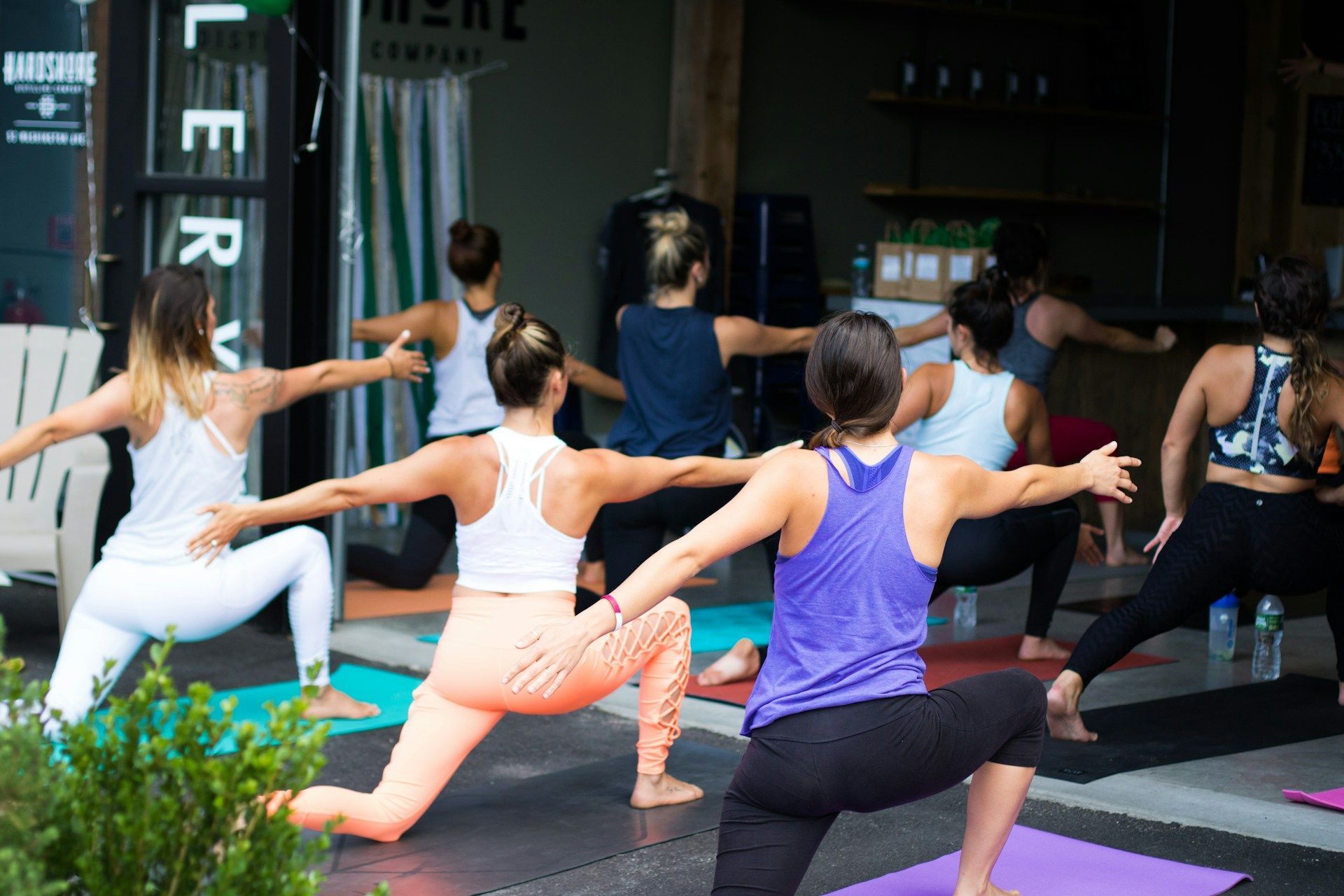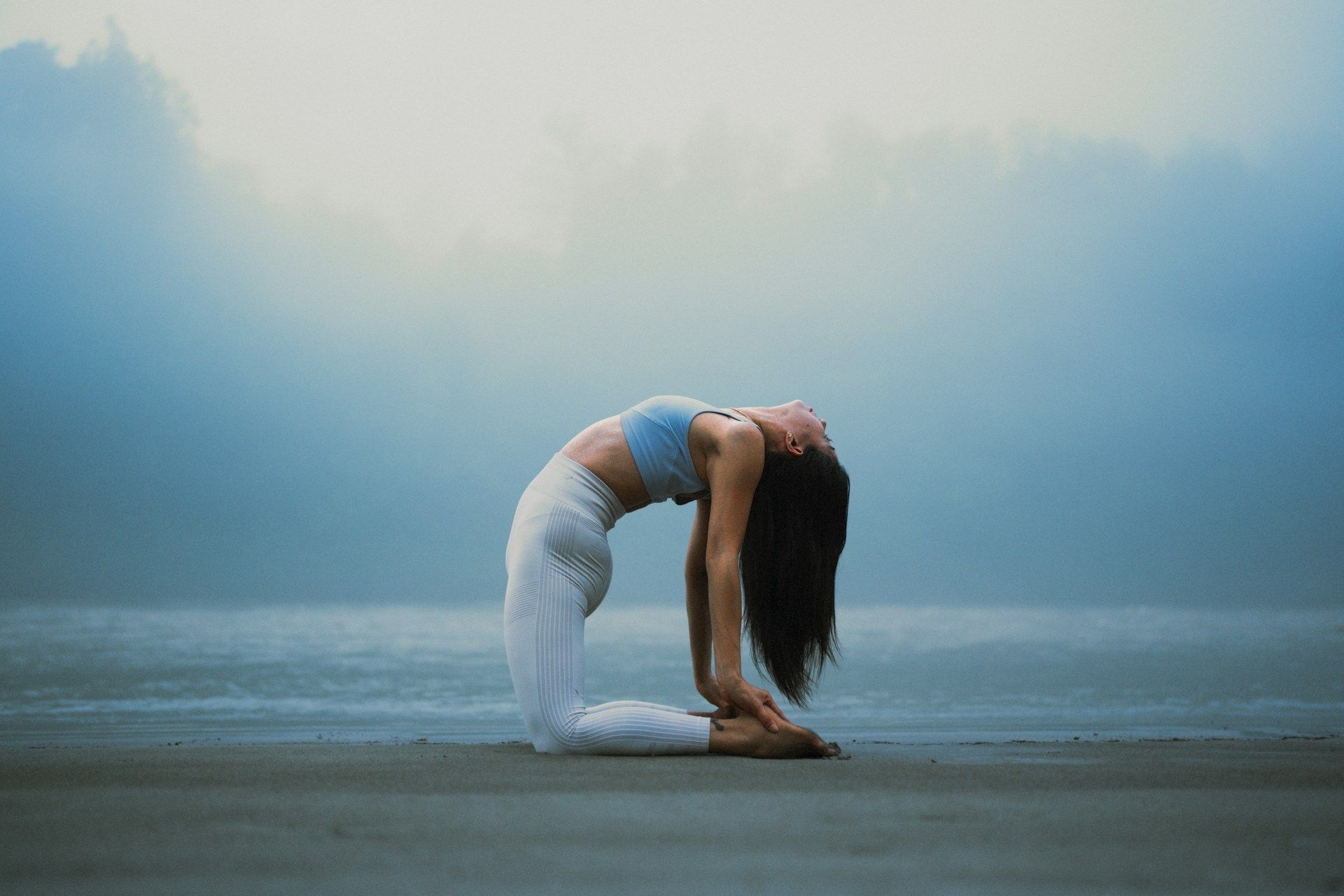Talking to Your Mat Through Your Recovery: Showing Your Nervous System Love
Healing your central nervous system is an important part of trauma and addiction recovery.
From an outsider’s perspective, your yoga practice might look like a sensual indulgence. Guess what? If it does, you’re doing it right.
Overcoming guilt at taking time for yourself might be the hardest step in your recovery. However, the only way you can bring your best self to the rest of the world is to get right with yourself, and there’s no better method than quiet, meditative practices, such as yoga.
Trauma and addiction wreak havoc on your central nervous system. Until you bring it back into balance, it will keep firing at random, sending you internal signals that tempt you back into past maladaptive patterns. Fortunately, all you really need is your breath, but creating a comfortable, inviting atmosphere helps, too. Here’s what the science says and how to show your nervous system love as you talk to the mat through your recovery.
Introducing Your Nervous System to a New Reality
According to the great teacher Patanjali, one of the purposes of yoga is to transcend the senses, easing suffering by relinquishing attachment to the physical world. Why, then, would I encourage you to indulge yourself before each practice, using aromatherapy, lighting, soothing music, and as many comfy, cozy props as you like? There is a method to this seeming madness.
The reason can be summed up in the tagline of a meme I recently saw that really spoke to me. It, in essence, said, “Maybe what you need is to introduce your nervous system to a different reality.” A softer, gentler, more loving, and kinder reality.
When your central nervous system is out of whack, the environment inside of you grows stormy, making practice difficult. This internal maelstrom can make sitting in quiet meditation or holding long, passive poses challenging. When the tempest inside collides with external discomfort, the temptation to say, “forget this,” roll up your mat, and walk away can overwhelm you.
Are there advanced practitioners who can sit in lotus pose for hours on a cold, concrete floor? Undoubtedly, there are, but we here at Only in Sedona Yoga aren’t among them. We aren’t monks. Although I have practiced yoga for as long as I can remember, it began as a physical discipline for me. It only became mental, emotional, and spiritual when I badly needed to heal, and it was my only tool to do so.
As such, I admittedly follow a slightly different path than a guru who has traveled to India or trained under great masters. While I dream of someday having such experiences, they aren’t a part of my present reality. That’s one reason I am such an advocate for everyone to practice yoga. I didn’t have to travel or go on a long-term retreat for it to work. If you dedicate yourself to your practice, the rewards
will follow, even if you don’t seek them, and even if you don’t expect them.
However, it only works if you practice regularly. A single class or even an occasional retreat may provide temporary benefits, but not a deeper transformation. Guess what? You’ll never look forward to your daily mat time if you make it an uncomfortable chore you dread. That’s the first reason I suggest indulging your senses by creating a comfortable, harmonious practice space — anticipating a yoga session should make you say “aah,” not “ugh.”
Furthermore, unhealed trauma wreaks havoc on your nervous system. So does addiction. For example, alcohol is so powerful that it can influence the development of several
nervous system diseases, including stroke, brain tumors, MS, and Alzheimer’s disease. Even the occasional overindulgence does a number on several neurotransmitters, including
GABA and glutamate, which can leave you feeling shaky and out of sorts the next day.
Science tells us that creating a harmonious environment can soothe your nervous system, helping to bring it back into balance. For example, consider the following research:
- The simple act of removing clutter boosts your mood, eases anxiety, and sharpens your focus. That’s why many yogis prefer a clean, minimalist aesthetic. That’s not to say you can’t surround yourself with your favorite sacred objects or favorite pieces of memorabilia (I certainly do). However, you should create a tidy, inviting space for your practice.
- At least one recent study shows that using aromatherapy leads to lower anxiety and pain levels. Lavender and peppermint essential oils were especially beneficial.
- Another recent study shows that listening to solfeggio frequencies, particularly 528 Hz, can reduce anxiety, improve your mood, and encourage cellular protection. Earlier studies suggest that this frequency is also beneficial for chronic pain.
- Finally, surrounding yourself with cozy things prompts your brain to release oxytocin, a neurotransmitter that induces a sense of well-being, belonging, and calm.
I’ll be perfectly honest: creating an environment that pleases my senses is a must for me to get into my practice, and I’ve been doing this for a long time. As an autistic person who went undiagnosed until age 52, much of my life has been a sensory nightmare. The neurotypical world most people love is way too bright, noisy, and fast-paced for me. Don’t even get me started on clothing — there’s a reason I often wear pajamas on our
Sober Saturday livestreams.
However, even if you love bright lights and big sounds most of the time, introducing your nervous system to the slower, gentler, softer side of things can provide enormous benefits. Hey, if you want to see how long you can sit in lotus on a cold, concrete floor, you can always test your stamina. Still, making your regular practice a sensory delight is the best way I’ve found to encourage regularity.
Being With Your Breath
Indulging your senses can also feel like a warm, comforting hug, which you may need if you talk to your mat through your recovery from a mental mess. However, there’s one tool you can use for serious nervous system soothing that requires no props or special environment at all — your breath.
When we come to the mat, we set our intentions, and we check in with ourselves, taking our physical, mental, emotional, and spiritual temperature. We
begin to practice detachment, reminding ourselves that we are not our thoughts or feelings any more than we are our arms or our legs. However, it’s easy to get mired down in our mental muck if examining our ideas, beliefs, and behaviors leads us down Rumination Road.
That’s why returning to your breath throughout your practice is so vital. It helps you return to that detached state instead of getting caught up in past regrets or future fears.
Ask yourself this: Are you your breath? No. Your breath, like your thoughts and emotions, moves through you, flows through you, but is not you. Each breath comes, each breath goes. Yet you remain, even as each one of the trillions of cells that make up your physical self exchanges carbon dioxide for fresh, clean oxygen. You surrender from within and draw renewed power from without, strengthening your bond with all that there is with each inhale and exhale.
When viewed this way, each breath is like a miniature rebirth. On and on this cycle goes, as you remain a calm center of awareness amid the waves moving within and without. Your only job is to witness, like a patron in a movie theater, which invites a sense of relaxation and calm.
From a scientific standpoint, slow, deep breathing
encourages theta rhythms in your brain, inducing calm. You have several types of brain waves, with theta being the most
relaxed and inwardly focused, a short hop away from the delta waves of deep sleep.
My favorite way of returning to my breath is to recite a short mantra by Thich Nhat Hanh, “Breathing in, I am aware that I am breathing in; breathing out, I am aware that I am breathing out.
Breathing Techniques
A discussion of breathing techniques deserves a full article in its own right. However, here are a few tips to encourage simply being with your breath.
1. Equal Breathing
Some people consider breathing in for a count of five and breathing out for the same length to be the “perfect” breath. Of course, you can choose to inhale for four, five, six, or any number that works. It’s impossible to count and think of anything else at the same time, making this a great way to pull yourself out of rumination and back into the present moment.
2. The Continuous Breath
To perform a continuous breath, direct your focus to where one exhale ends and the next inhale begins. Can you do so with no pause, one leading directly into the other? It’s a bit trickier than it sounds and requires considerable concentration.
3. The Elongated Exhale
Lengthening your exhales is perfect for engaging the parasympathetic side of your nervous system if you notice anxiety sneaking in, especially during longer holds. All you have to do is exhale for longer than you inhale. Experiment to find the pace that works for you.
Loving Your Nervous System Through Your Recovery
Trauma and substance abuse disrupt your central nervous system function. This uncentered state can make it hard to relax and get into your yoga practice. However, the mat can be the perfect place for healing when you know the right tricks to help you leave each mat session feeling calmer, more mentally stable, and refreshed.
Use these tips to show your central nervous system some love through your recovery work. Calming the storm within can lead to a more harmonious, peaceful, and balanced you both on and off your mat.











